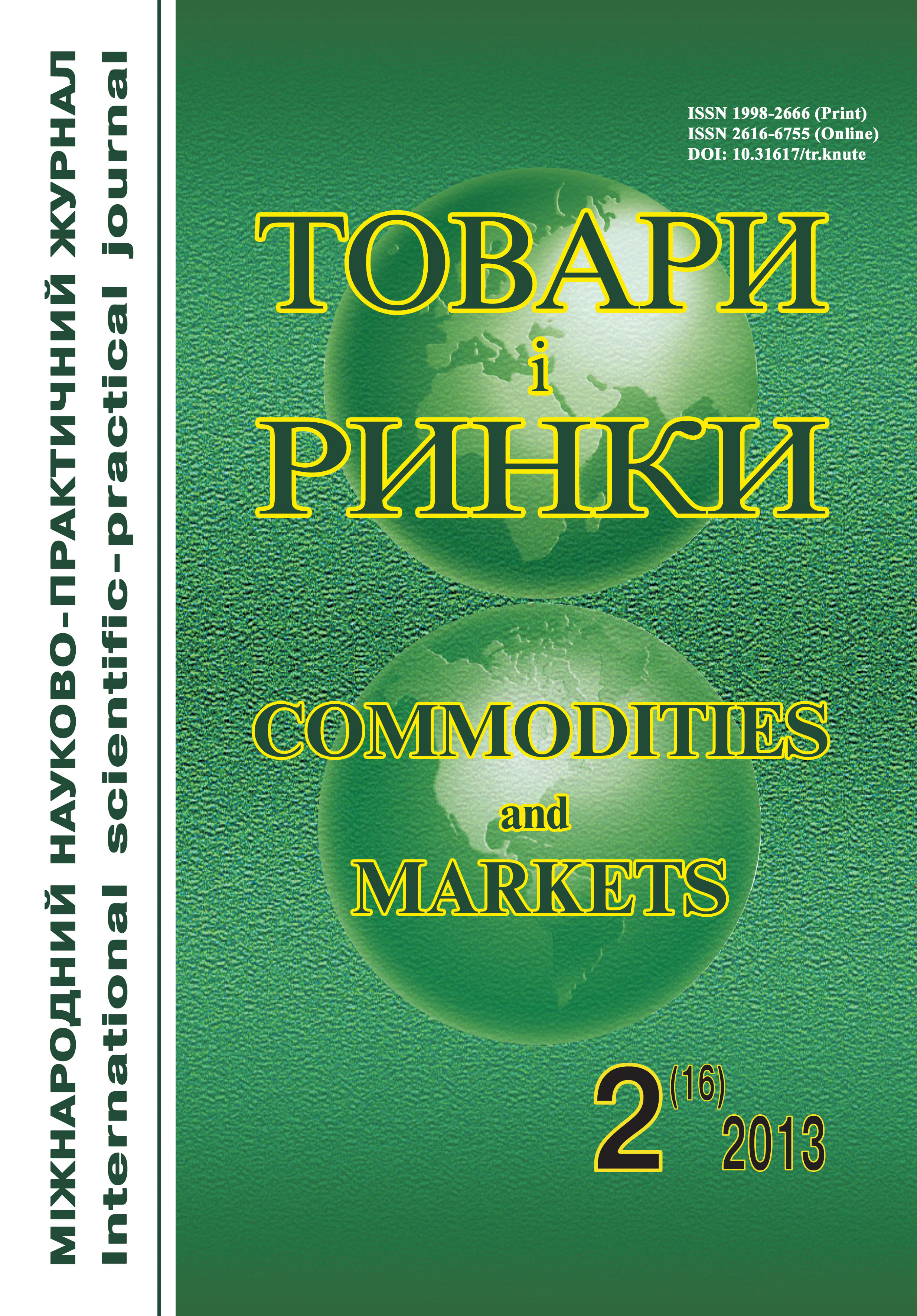Harmlessness of vegetable and fruit canned food
Abstract
Background. Harmlessness of vegetable and fruit canned food includes microbial harmless, content of toxic elements, radionuclides, nitrates. Shelf life of canned is determined by their sterility. The essence of the authors’ improved method process of receiving the new canned with squash and plum, with pumpkins and quince, is in replacement of the acetic acid with natural organic acids constituents in the marinade, and that the improved method involves the alleviated heat treatment.
Material and methods. The objects of study served as vegetables and fruits of these botanical varieties: zucchini (Gribovsky-37), cherry plums (Huck), pumpkin (Muscat), quince (Crimean), cranberry (Wetland), viburnum (Velykoplidna); new canned food from zucchini and cherry plum and canned pumpkin and quince with cranberry with viburnum juice.
Safety indicators were studied in the original raw fresh and canned after 9 months of storage according to the terms: the total number of MAFAnM, mold fungi, yeast, content of toxic elements (Plumbum, Cadmium, Arsenic, Mercury, Copper, Zinc), radionuclides (137Cz, 90Sr ) nitrates.
Results. Number of MAFAnM in canned after 9 months of storage (<15 CFU in 1 g) confirms the adequacy of heat treatment with the active acidity (pH) of the product 3.2–3.4. Reducing the concentration of toxic elements, radionuclides and nitrate in canned fruit and vegetable part after long-term storage is due to their partial transition with small pieces of flesh to the marinade as a result of natural diffusion.
Conclusion. These data confirm the feasibility of replacing acetic acid with the natural organic acids of the fruit and berry raw materials, resulting in product pH below 3.8. Low active acidity can mitigate heat treatment, by applying the traditional lower temperatures and shorter term pasteurization (95±2 оC for 2–3 min).
References
Rostovs'kyj V. S. Systemy tehnologij harchovyh vyrobnyctv / V. S. Rostovs'kyj, A. V. Kolisnyk : navch. posib. — K. : "Kondor", 2008. — 256 s.
Nino V. Sterilizujushhij jeffekt – osnova upravlenija processom sterilizacii konservov / V. Nino, V. Butnik, V. Klokov i dr. // Rybnoe hozjajstvo. — 2001. — N 4. — S. 49.
Tehnichna mikrobiologija / [Kaprel'janc L. V., Pylypenko L. M., Jegorova A. V. ta in.] ; za red. L. V. Kaprel'janca. — Odesa : Druk, 2006. — 308 s.
Konservy. Frukty proterti abo podribneni. Tehnichni umovy : DSTU 4898:2007. — [Chynnyj vid 2007—12—12]. — K. : Derzhspozhyvstandart Ukrai'ny, 2009. — 24 s.
Dubinina A. Osoblyvosti nakopychennja kontaminantiv ovochevymy kul'turamy // Mizhnar. nauk.-prakt. zhurn. "Tovary i rynky". — 2012. — N 2 (14). — S. 130—139.
Gigienicheskie trebovanija bezopasnosti i pishhevoj cennosti pishhevyh produktov : SanPiN 2.3.2.1078–01. — Vved. 2002—07—01. — Ministerstvo zdravoohranenija RF, 2001. — Rezhim dostupu : www.fumigaciya.ru/sites/default/files/ public/.../sanpin2321078-01.doc.
Verhivker Ja. Teplovoe konservirovanie pishhevyh produktov v polimernoj tare / Verhivker Ja., Miroshnichenko E., Remih I. // Harchova nauka i tehnologija. — 2012. — N 4 (21). — S. 70—71.
Blyznjuk I. Pidvyshhennja harchovoi' cinnosti ta natural'nosti konserviv z kabachkiv / I. Blyznjuk, Z. Harchenko. — Rezhym dostupu : http://udau.edu.ua/library.php?pid=2286.
Konservirovannye produkty. Principy kontrolja termicheskoj obrabotki, podkislenija i ocenki germetichnosti tary / pod red. O. Gejmina i L. M. Ujeddinga. — Vashington : Institut pererabotchikov pishhevoj prom-sti, 1995. — 250 s.
Lilishenceva A. Perspektivnye napravlenija sozdanija kombinirovannyh pishhevyh produktov / Lilishenceva A., Safronova D., Komarova N. // Pishhevaja prom-st'. — 2008. — N 2. — S. 17—18.
Orlova N. Harchova cinnist' novyh konserviv iz kabachkiv i alychi / N. Orlova, I. Kuz'menko // Mizhnar. nauk.-prakt. zhurn. "Tovary i rynky". — 2013. — N 1 (15). — S. 93—100.
Kuz'menko I. Harchova ta biologichna cinnist' novyh ovochevo-fruktovyh konserviv pislja tryvalogo zberigannja // I. Kuz'menko I. Goncharova // Mizhnar. nauk.-prakt. zhurn. "Tovary i rynky". — 2012. — No 2 (14). — S. 139—147.
GOST 30425:97. Konservy. Metod opredelenija promyshlennoj steril'nosti. — Vved. 1998—01—01. — M. : IPK, Standartinform, 1997. — 16 s.
Lakovich Dzh. Osnovy fluorescentnoj spektroskopii ; per. s angl. / Dzh. Lakovich. — M. : Mir, 1986. — 496 s.
Kompleks universal'nyj spektrometricheskij "Gamma pljus". Tehnicheskoe opisanie i instrukcija po jekspluatacii. — M. : Jekspert centr, 1995. — 56 s.
GOST 29270–95. Produkty pererabotki plodov i ovochem. Metody opredelenija nitratov. — Vved. 1998—01—01. — K. : Gosstandart Ukrainy, 1997. — S. 12—15.
Persianova I. P. Mikrobiologija konservirovanija pishhevyh produktov / Persianova I. P., Gerasimenko L. N., Stojanova L. A. — O. : Odesskij IPDO NUPT, 2010. — 307 s.



